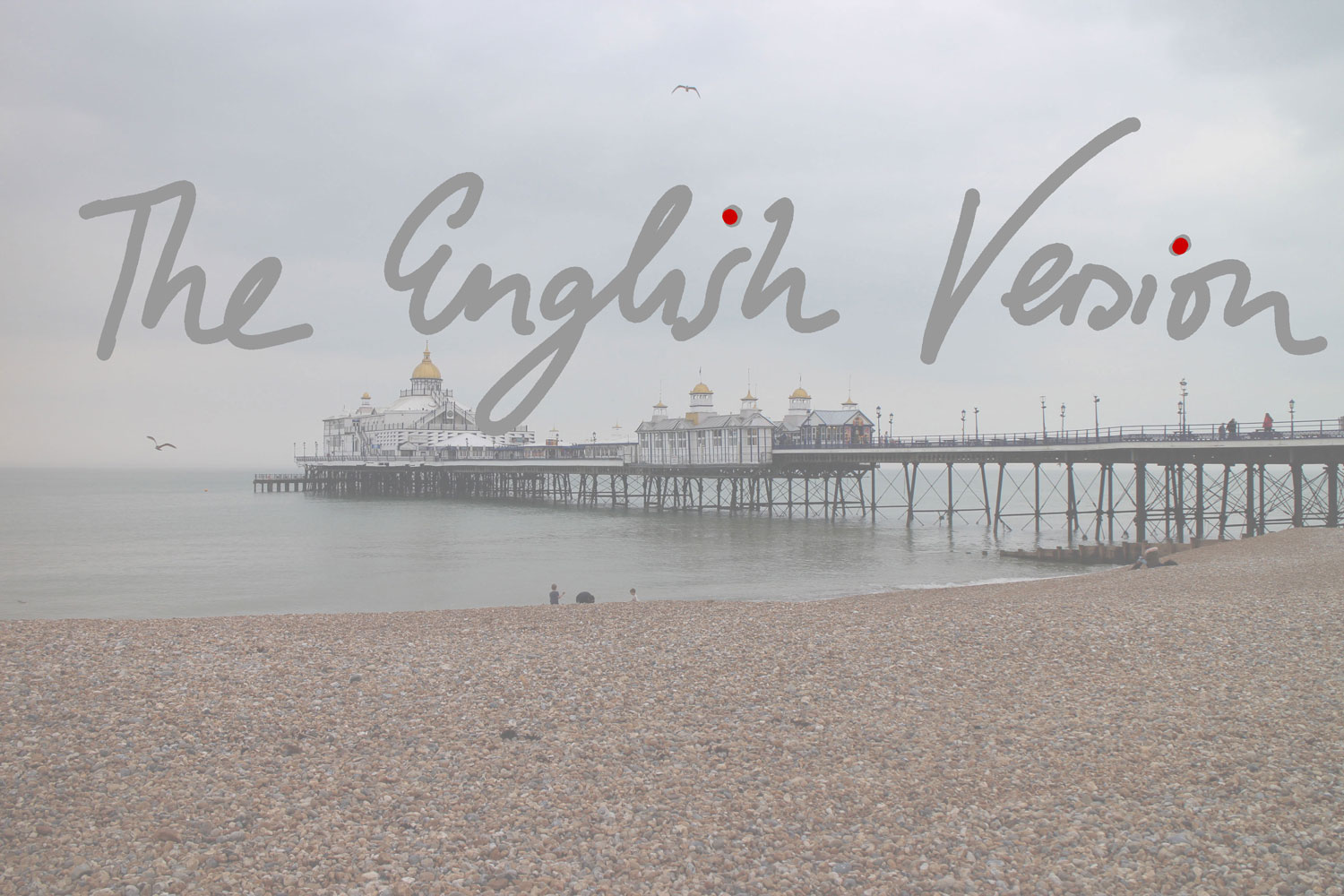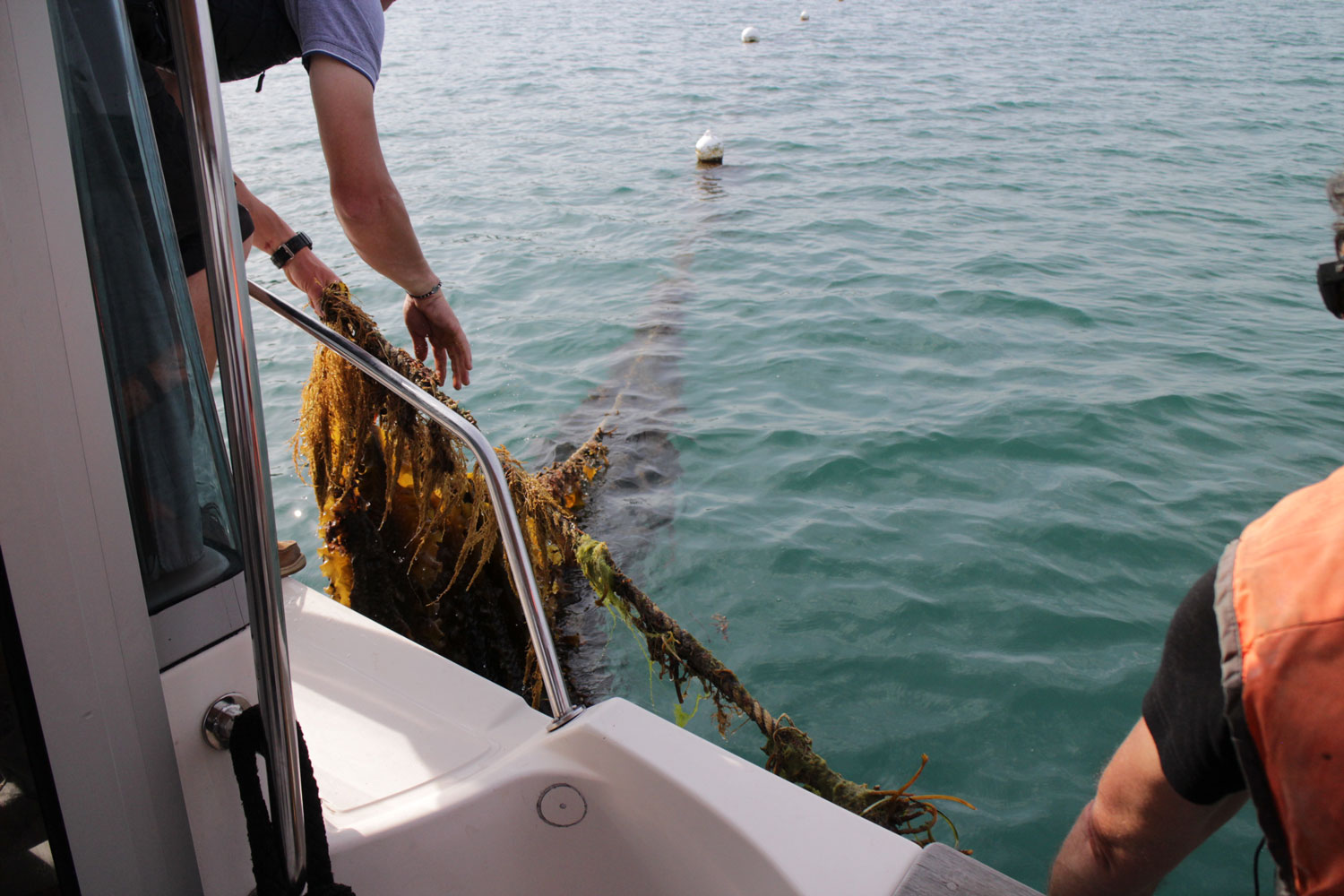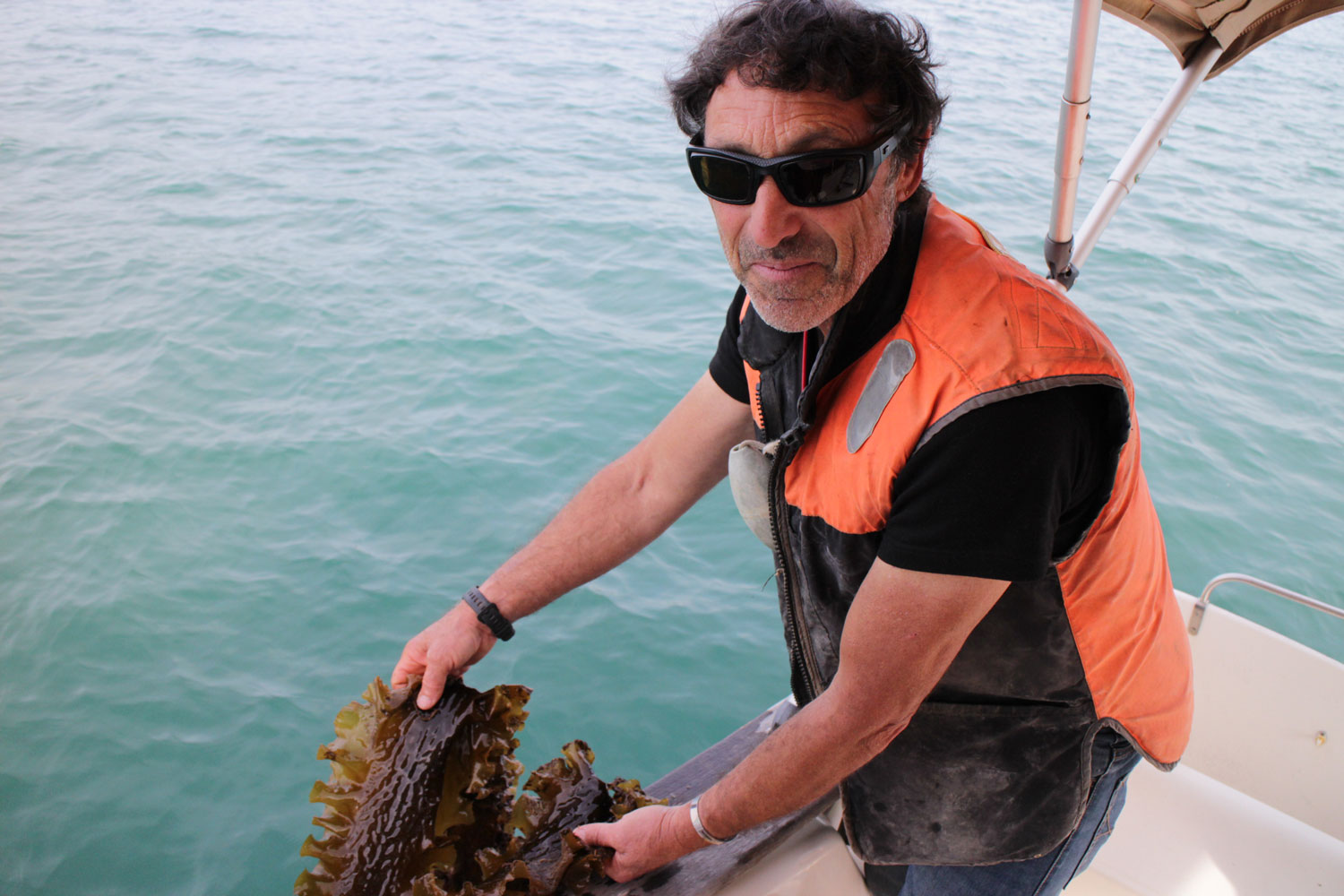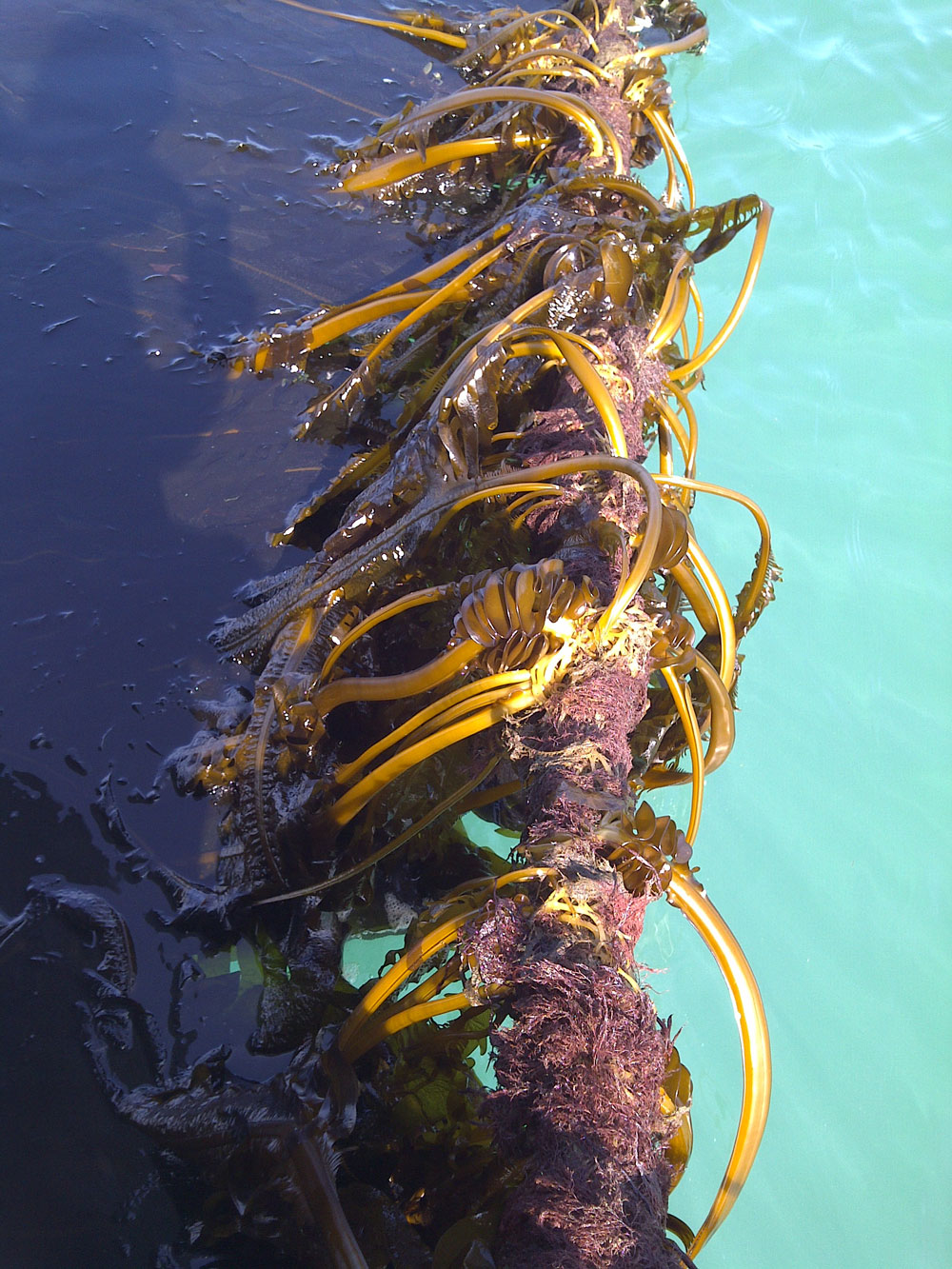This is a translation of my German blogpost Hinter den Beauty-Kulissen… Protec Ingredia GmbH Proudly Presents: Beim Algenbauern. Enjoy!
In cooperation with ProTec Ingredia // I got up very early this morning. Yes, I did want to catch the beautiful sunrise over the bay of Saint-Malo but today I am also going on a special excursion: right after breakfast I’ll be visiting the picturesque little village of Saint-Suliac. Saint-Suliac is located on the coast, not far away from Saint-Malo and quite close to the famous Mont Saint-Michel. Here the river Rance flows into the English Channel. Saint-Suliac’s quay is lined with small boxy stone houses that are typical for this part of Brittany.
Birgit Haemel from ProTec Ingredia and I are waiting at the quay of Saint-Suliac for our boat to arrive, admiring the early morning view of the sea. The tides are very strong in this part of Brittany: the tidal range – which refers to the difference in vertical height between high tide and low tide – can measure more than 12 metres. At high tide you see the fishermen’s boats rocking gently on the waters but when low tide comes the vista changes entirely: the beaches become much bigger, the algae are lying exposed on the ground and in many bays the boats are resting on their sides, pressed up against the wet sand. The high tidal range in this region is also used to generate electrical power; there is a local tidal power plant.
In the distance we can hear a car approaching: it‘s Gabrielle Moro, the marketing manager of French cosmetics ingredients manufacturer Codif which specialises in marine ingredients. Gabrielle will be taking us on a boat trip to the estuary of the river Rance: this is where Codif is cultivating selected algae varieties which are used in the company’s raw and active ingredients. After Birgit, Gabrielle and I have clambered onto the boat we are greeted by algae farmer Jean-François Arbona. Jean-François is a marine biologist by profession and he loves algae.
Now the boat’s engine starts to roar and we are on our way to the estuary where the sweet water from the river mingles with the salty water of the sea. Back in the 1980s Jean-François bought a private concession from the local community for this exact spot; the water is quieter here than on the open sea but there is still a constant water exchange. Boats and fishing are not allowed; there is no industry around this algae plantation and sometimes you can even see some dolphins.
The algae farm
The water depth of the algae farm is 15-17 metres: Jean-François and his team have submerged huge blocks of concrete which are anchored to the ocean floor. Ropes are strung between these blocks to form several parallel rows. When October comes the young algae seedlings – which were raised in a protected spot until they are big enough – are planted along the ropes. The resulting algae forest takes on the function of a reef, offering shelter and food to a variety of marine life. Small crabs, for example, love the algae and they, in turn, are eaten by fishes. Over the years Jean-François has noticed that the bio-diversity in this part of the river mouth has increased quite considerably, courtesy of his algae banks. On the picture above you can see one of the algae ropes which he pulled up from the water for us.
Jean-François cultivates different algae varieties, such as the brown algae wakame (undaria pinnatifida), the sugar kelp saccharina latissima, the edible winged kelp alaria esculenta and the oarweed laminaria digitata. Not every algae variety is suitable for cultivation – it must be strong enough to survive the competition with other marine plant life on the algae banks.
When we were visiting the algae farm most of the algae had already been harvested: the only algae that were left were some of the wakame. The algae harvest takes place in early summer and tends to finish in late June; Jean-François told us that he and his team usually harvest around 45-50 tonnes of algae per year. These algae are not just used in cosmetics, by the way, but also in food production. For Jean-François it is important that the algae be harvested carefully and by hand; he‘s developed a special kind of boat which is suitable for the algae harvesting. After the algae harvest is finished, the ropes (the total length of which measures around 5 kilometres) are pulled up from the water and dried on the fields of the local village. As a nice side effect the remaining fragments of algae enrich the earth of the fields, making it more fertile.
Algae farmer and marine biologist
I ask Jean-François how he became an algae farmer. With a smile tells me that in the late 1970s, when he was a young man, he began to question his way of life. During his marine biology studies at university he became fascinated with algae. In 1982 he received a scholarship for South Korea and began to study local algae cultivation in the port city of Busan. Armed with this knowledge he returned to France and began to grow his own algae – at that time, a rather unusual pastime in Europe. Today, algae cultivation is much more common in Europe and an industry that is actively promoted by the EU.
And speaking of the European Union: Jean-François is currently involved in an EU project which is studying the growth of certain algae in different climates. He told me that he really likes the combination of physical work – cultivating and harvesting the algae – and scientific research that he gets to do in his job. In spring and summer he works on his algae banks, in winter time he has more time for desk research and scientific studies, visiting conferences and working on different projects. After all, he is a marine biologist.
Jean-François considers himself to be a sort of creative inventor: algae farming and harvesting offers many challenges which he usually solves with the help of the classic trial and error method. He says that he often starts with a traditional method and then adapts or further develops it to suit the specific difficulties of algae farming. Laughing, he adds that he could almost open a “Museum of Inventions” at home.
Algae ingredients
Algae are fascinating plants which are roughly divided into micro algae and macro algae. They contain many different nutrients which they absorb from the water in which they are growing. The algae are tested for chemical residue or other impurities before they are further processed into food or cosmetic ingredients. On the picture above you can see a wakame algae which Jean-François retrieved from the water; the photo directly above this text shows an oarweed – Gabrielle took this photo a few weeks before our visit (when we were in Saint-Suliac the oarweed had already been harvested).
I wanted to know which cosmetic ingredients from Codif contained the wakame undaria pinnafidita or the oarweed laminaria digitata:
- The brown macro algae wakame (undaria pinnatifida) is a component of Codif’s Matrigenics.14 G complex. The extract contains minerals and essential amino acids as well as so-called wakame esters which stimulate the synthesis of hyaluronic acid, collagen and elastine inside the skin. The wakame also plays a role in Codif’s ingredient Wakapamp where it helps to increase the water storage within the dermis.
- The oarweed laminaria digitata (also called kombu) is used in various Codif extracts, each of which has different skin care properties: the active ingredient Actibiome, for example, supports the skin’s micro flora while Phycojuvenine has a cell-protecting effect on the skin.
Climate change
As our boat is returning to the shore we start talking about climate change. Jean-François says that he can already see the first effects of the changing world climate in his algae – the rise of a single centigrade in the average temperature can have a massive impact on the ecosystem. Last year, he said, spring temperatures in Brittany were unseasonably warm for around two weeks. This caused a specific type of ocean snail to rapidly increase its population and start feeding on the algae banks. Luckily this year the spring weather remained stable so the snails weren’t a problem.
However, the gradual increase in the average water temperature also means that every year, the algae seedlings have to be planted later: there are other water plants that love the warmer temperatures and they are starting to force out his algae which need cold water. “Climate change is no joke” Jean-François says drily as our boat is approaching the small harbour of Saint-Suliac.
After our algae excursion Birgit and I decide to have some lunch – I’ll tell you more about our topics of conversation in the November installment of the Beauty Soap!






